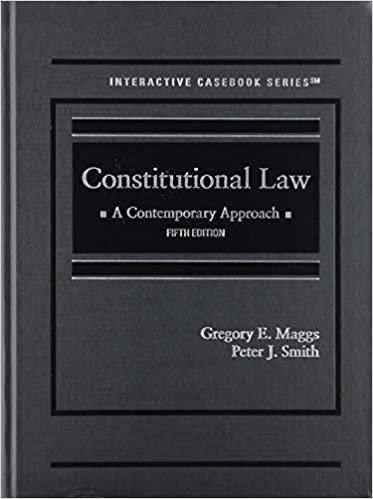Question
Core Task In this module we looked at legal change and the role that different parts of society play in initiating or resisting change.In particular
Core Task
In this module we looked at legal change and the role that different parts of society play in initiating or resisting change.In particular we examined the concept of pluralism that helps us see change as the domain of interest groups and larger structures rather than consider law reform as something driven primarily by individuals or as broad demographic or populist movements.
This challenge explores the role of populism by mapping out hypothetical social structures, driving opinion around a law reform issue, and then by developing strategies to communicate with them.
A Select a law reform issue
Choose a law reform issue from the list below or one that your group prefers.You need to appreciate the basics of the issues but do not need to have in-depth understanding.
- Drug decriminalisation
- Family violence reform
- Bank regulation
- Defund the police
B Create a Stakeholder Map
Change is driven by stakeholder analysis, that is identifying the organisations and other structures that hold power or sit at important 'junctions' in society where influence can be wielded.Public opinion, and power is not spread evenly across society, but accumulates in these critical areas that can leverage government and which other interest groups seek to influence.
In this challenge we will be using a basic network structure that sees stakeholder groups connected together by chains of influence, where one group has social connections to and influence over others in the chain.This is a simple model but will serve our purposes for this challenge.
Use a shared mindmapping service like Coggle.it (which is free) to create your map, starting by putting your issue in the the centre of the diagram.Coggle allows you to make a chain of connections from one concept or group to another.You will put pro-change groups on the left of the issue and anti-change groups on the right.
Organisations that are closer to the centre of the diagram are considered to be more powerful in this situation and have influence over all groups connected to them.However sometimes influence can go both ways.
The next step is to create some stakeholder groups to place on the map.You then refer to the table below to see what sort of stakeholder they have to place on this map.
Stakeholder Groups:
- mental health group
- police services
- private security
assign traits to each of your organisations that indicate its values and social position.Select at least one trait, but no more than one trait from each category.
Traits:
- Political Orientation
- Conservative, progressive, populist, centrist
- Youth culture,Elite, Mainstream, Counterculture
you can start assembling your map:
- There are two pro and two anti links on each side of the issue
- A stakeholder can only connect to another if it has one or more traits in common.
- Each stakeholder can have two others linked to it by an outward link.
C:Stakeholder Strategy
Split your ideas into pro and anti reform factions.
Each faction takes turns in developing a strategy to influence or mobilise your side of the issue, or alternatively to subvert, undermine or attack the credibility of the other side.
You get one point for every Stakeholder in the chain that is reached by your strategy.If linked stakeholders have multiple traits in common, they score additional points for each extra trait.
As a whole, flag any ethical or even legal issues with the strategy.This does not stop it being effective, but it is worth noting.
Once both sides have developed three different strategies, add up the totals to see what is the best strategies.
Step by Step Solution
There are 3 Steps involved in it
Step: 1

Get Instant Access to Expert-Tailored Solutions
See step-by-step solutions with expert insights and AI powered tools for academic success
Step: 2

Step: 3

Ace Your Homework with AI
Get the answers you need in no time with our AI-driven, step-by-step assistance
Get Started


